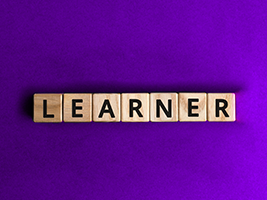
THE SLIPPERY SLOPE OF LEARNER ENGAGEMENT
Learner engagement is a tough beast to tame. Granted. But let’s not forget that it’s not the end goal in itself. Read on to find out why, and what to focus on additionally.

Learner engagement is a tough beast to tame. Granted. But let’s not forget that it’s not the end goal in itself. Read on to find out why, and what to focus on additionally.

Getting employees to align with organizational values is not easy. This article explores ways to take your values training beyond a mere checkbox activity.

There are some biases that are harder to spot than others because they almost characterize the thinking of the field itself. Design is conceived in the real world; it is practiced by people living in the real world. These minds are also educated in design and conditioned daily by the real world.

L&D has long had a history of coming up with solutions that fall woefully short of achieving our goals. But changing a word in order to make up for a shortcoming in the way we do our work is not the answer. Instead, I strongly suggest that we focus on improving our solutions by using thoughtful strategies and approaches. Here are some counter arguments for the proposal to stop using the word ‘learner’.

We’re used to trying different tactics to make our content a little bit more engaging. But here, we are talking about a highly under-utilized tactic – humor. I can hear the alarm bells ringing already. The content is too serious! No one will laugh! I don’t know how to write humor!… and so on. Relax. This article explores a few tips you can use to incorporate a little bit of humor into your next instructional writing project. Hope you have fun!

“But what is it that you will do? I’m the one who’s going to give you all the content!”

This is about how we, the training industry, are being unwittingly used by unscrupulous corporates to enslave workers.

In this exclusive interview with Learnnovators, Stella Collins shares her insights on how learning really works in the human brain. She explains her views on the significance of having a better understanding of ‘brain science’ and mastering ways to bring that into learning design. Stella’s recommendation to give people the ‘skills of learning’ first before we ask them to self-direct their learning, is highly thought-provoking.

In this exclusive interview with Learnnovators, Nick Shackleton Jones shares his insights on how people really learn. He explains his views on the difference between education and learning in the context of our workplaces. Nick’s recommendation to provide relevant resources, accessible at the point of need to our people at work, so as to ensure that ‘less learning’ will take place, is highly thought-provoking.

In this exclusive interview with Learnnovators, Dr. Stella Lee shares her insights on the changing nature of workplace learning in relation to technological innovations such as Artificial Intelligence and robotics.